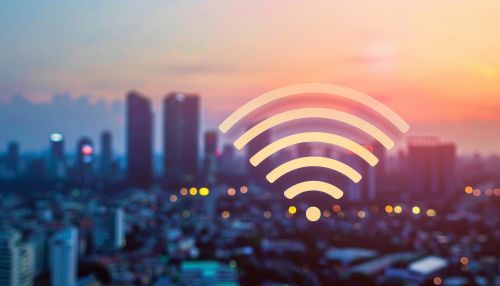Wi-Fi
Introduction
Wi-Fi is a wireless networking technology that uses radio waves to provide wireless high-speed internet and network connections. The term "Wi-Fi" is a trademarked phrase that stands for "Wireless Fidelity". This technology is based on the IEEE 802.11 family of standards, which are developed by the Institute of Electrical and Electronics Engineers (IEEE) and adopted by the Wi-Fi Alliance.
History


The concept of Wi-Fi began in the 1970s with the advent of wireless communication technology. The first version of the IEEE 802.11 standard was released in 1997, providing a wireless network protocol that allowed for data rates up to 2 Mbps. However, it wasn't until the early 2000s that Wi-Fi became commonplace in homes and businesses, thanks to the proliferation of personal computers and the internet.
Technology
Wi-Fi operates in the 2.4 GHz and 5 GHz bands of the radio spectrum. These bands are divided into multiple channels, similar to television channels, which can be used simultaneously without interference. Wi-Fi uses a technique called spread-spectrum transmission, which spreads the data across a wide band of frequencies to improve reliability and speed.
Wi-Fi Standards
There are several versions of the IEEE 802.11 standard, each offering different speeds and features. The most common versions are:
Security
Wi-Fi networks can be secured using various methods, including WEP, WPA, and WPA2. These security protocols encrypt the data sent over the network to prevent unauthorized access. However, these security measures are not foolproof, and Wi-Fi networks can still be vulnerable to attacks such as eavesdropping and hacking.
Applications
Wi-Fi is used in many different applications, from home and office networking to public internet access points. It is also used in many consumer electronics devices, including smartphones, tablets, and game consoles.
Future of Wi-Fi
The future of Wi-Fi looks promising, with new technologies such as Wi-Fi 6 and Wi-Fi 7 on the horizon. These new standards promise to deliver faster speeds, greater capacity, and better performance in congested areas.
